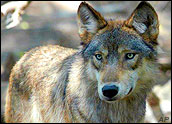
Leading scientific institutions from around the world have collaborated on one the largest Web projects to date: a global effort to document all 1.8 million named species of plants and animals on Earth in a free online resource called “Encyclopedia of Life.”
Similar to Wikipedia, the Encyclopedia of Life will allow users to add information and details, such as species sightings and photos. However, the Encyclopedia of Life content will be authenticated by scientists.
The Field Museum of Natural History, Harvard University, Marine Biological Laboratory, Smithsonian Institution and Biodiversity Heritage Library joined together to initiate the project. Other institutions, of course, will be tapped worldwide to help complete the immense project.
The effort was jump started by a US$10 million grant from the John D. and Catherine T. MacArthur Foundation and $2.5 million from the Alfred P. Sloan Foundation. The Encyclopedia of Life currently is showing demonstration pages that include the death cap mushroom, rice, yeti crab and polar bear.
Designed for All Levels
The Encyclopedia of Life is designed for everyone, regardless of age or experience level in the field of biology. Children will be able to view species listings focused on their level of education, while biologists will be able to view highly scientific details.
“The Encyclopedia of Life will provide valuable biodiversity and conservation information to anyone, anywhere, at any time,” said Dr. James Edwards, currently executive secretary of the Global Biodiversity Information Facility and the executive director of the Encyclopedia of Life.
“Through collaboration, we all can increase our appreciation of the immense variety of life, the challenges to it, and ways to conserve biodiversity. The Encyclopedia of Life will ultimately make high-quality, well-organized information available on an unprecedented level. Even five years ago, we could not create such a resource, but advances in technology for searching, annotating and visualizing information now permit us, indeed mandate us, to build the Encyclopedia of Life.”
Ten Years
The Encyclopedia of Life currently estimates that it will take 10 years to create Internet pages for all 1.8 million species currently named. When available, species listings will also have photographs, video, sound and location maps. The first listings should be available online to the public sometime in 2008.
“For more than 250 years, scientists have cataloged life, and our traditional catalogs have become unwieldy,” said Ralph E. Gomory, president of the Alfred P. Sloan Foundation. “The Encyclopedia of Life will provide the citizens of the world a ‘macroscope’ of almost unimaginable power to find and create understanding of biodiversity across the globe. It will enable us to map and discover things so numerous or vast they overwhelm our normal vision.”
Genesis of EOL
Dr. Daniel H. Janzen, a professor of biology with the University of Pennsylvania, is credited with first building species pages online back in the 1990s.
“The idea came when they put Internet in the dormitories here at the university and everyone built a species page for themselves — a photograph of me, what girls I like, what movies I go to, and all that sort of stuff,” Janzen told TechNewsWorld. “I looked at that said, ‘That’s exactly what we need for each species.’ So we sat down and made species pages and put them on the Web.”
Janzen quickly realized that the resources necessary to get the data onto species pages was in short supply — and that the technology wasn’t ready to get it done efficiently.
“I realized that the guys who love to sit in their offices in the urban world, the computer stuff, they would invent the mechanical structure for getting this out there — I figured the mechanics would take care of itself,” Janzen explained. “I focused on gathering enormous quantities of natural history and photographs and encouraging others to do the same.”
Into the Field
While Janzen is a big fan of Encyclopedia of Life, he is already looking forward to the next step — the ability to read a species’ biological information and connect to more detailed info about it. The technology is available to read the DNA signature of a species, but what the world needs is a handy device able take a piece of an animal, read the DNA, compare it to a database of known species, and deliver the result to users, which would then link to additional information.
If you believe in the value of biodiversity, you’ve got to be able to help people understand it, Janzen said.
“What I see is, if the world can’t read this information, it’s just firewood. It’s that simple. It’s just like libraries. If you can’t read a book, a library is just firewood. If you asked a person in the 11th century if reading was important, what’s he going to say? ‘No, of course not — what’s reading?'” Janzen explained.
“The vast majority of people cannot read biodiversity, whether they are game wardens, farmers or school children. And if they can’t read it, it’s just goo,” he said.
A link between the natural world, a DNA-reading device, a DNA sequence library, and a detailed knowledge base — the Encyclopedia of Life — is the step of the future, Janzen noted. “We couldn’t have had this conversation three years ago,” he said. “But now we can.”




















































